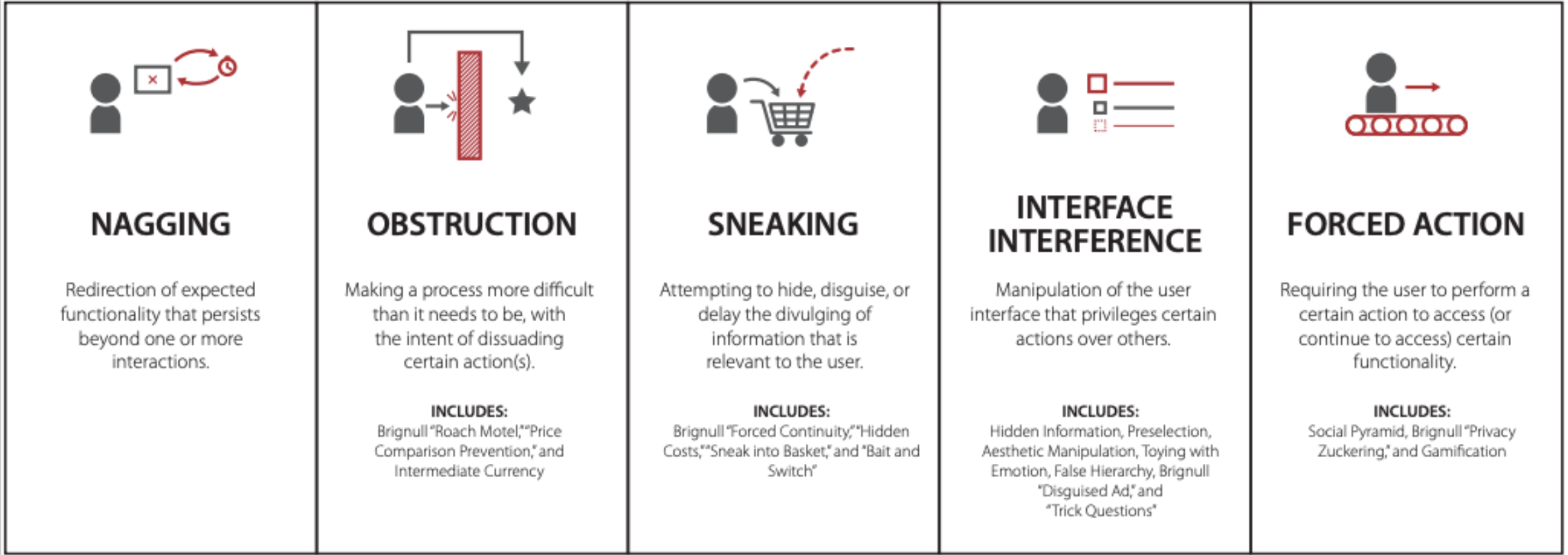L11: Building smarter societies
1/10
There's no tags or description
Looks like no tags are added yet.
Name | Mastery | Learn | Test | Matching | Spaced |
|---|
No study sessions yet.
11 Terms
Symbiotic societies
Human-robot symbiotic societies are communities in which humans and robots interact in a mutually beneficial way, combining human intelligence, creativity, and emotional depth with robotic efficiency, precision, and endurance. In these societies, robots aren't simply tools but are integrated into social, economic, and personal aspects of life, supporting and enhancing human activities in a manner that respects human values and promotes well-being.
To facilitate development of smart symbiotic societies, the technology should be Persuasive.
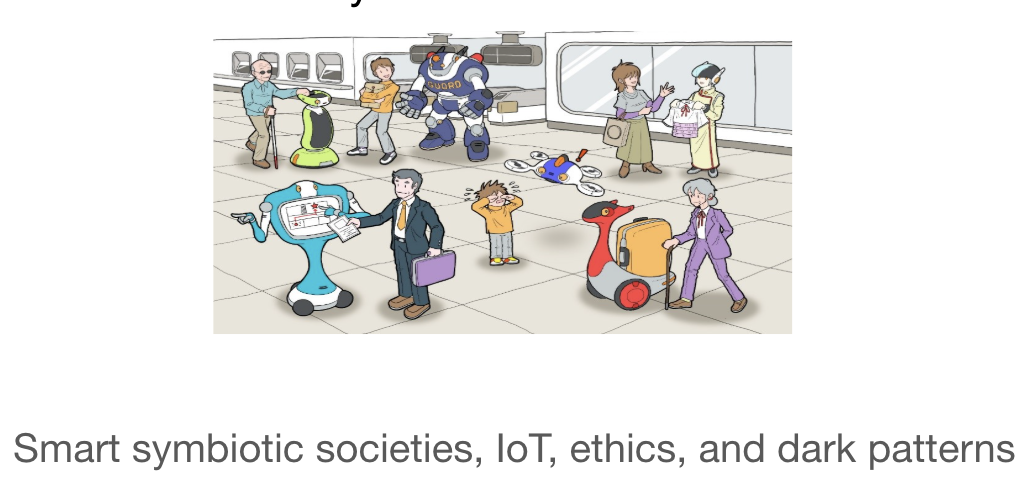
What is the Functional triad of persuasive technology?
“Persuasive technology is broadly defined as technology that is designed to change attitudes or behaviors of the users through persuasion and social influence.”
Persuasive technologies can not be coercive and deceptive. They are explicitly designed for persuasion.
3 aspects:
tool
medium
social actor
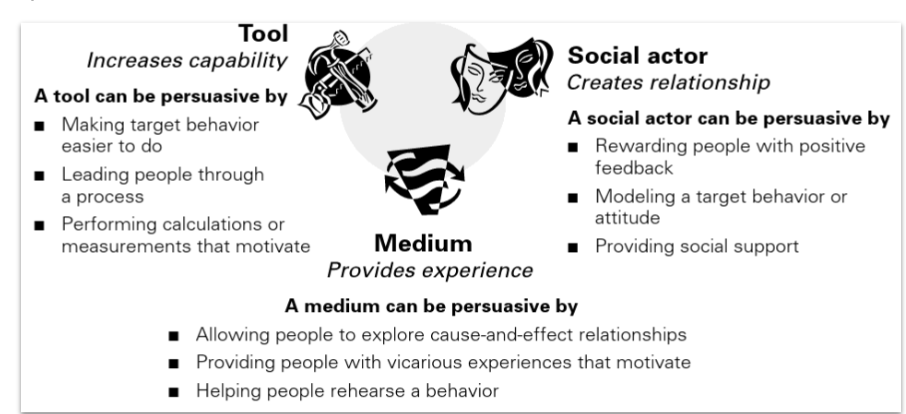
How can a tool be persuasive? - functional triad
a tool can be persusive by:
making target behavior easier to do
leading people through a process
perforing calculations or measurments that motivate
*increases capability
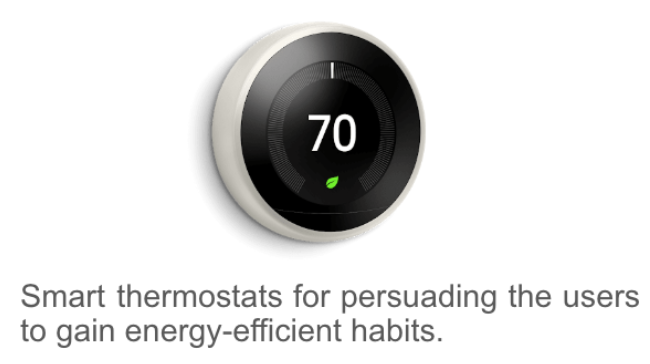
How can a medium be persuasive? - functional triad
a medium can be persuasive by:
allowing people to explore cause and effect relationships
providing people with vicarious experiences that motivate
helping people rehearse a behavior
*provides experience
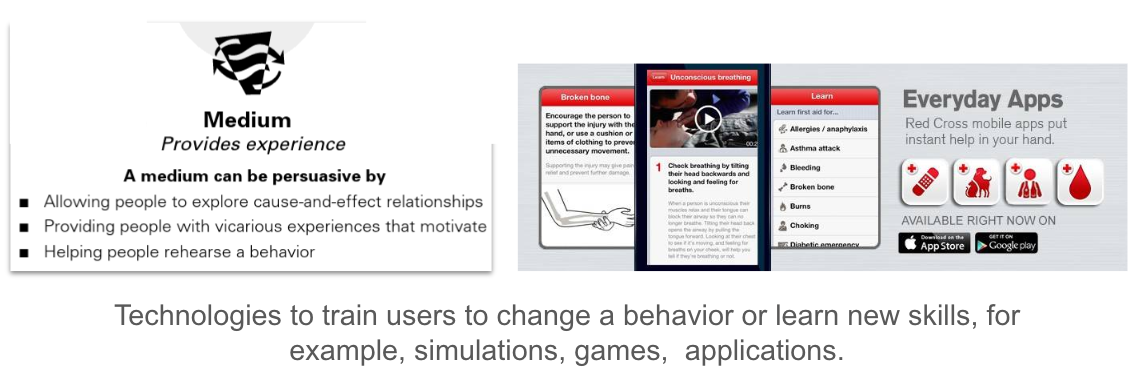
How can a social actor be persuasive? - functional triad
a social actor can be persuasive by:
rewarding people with positive feedback
modeling a target behavior or attitude
providing social support
*creates relationship

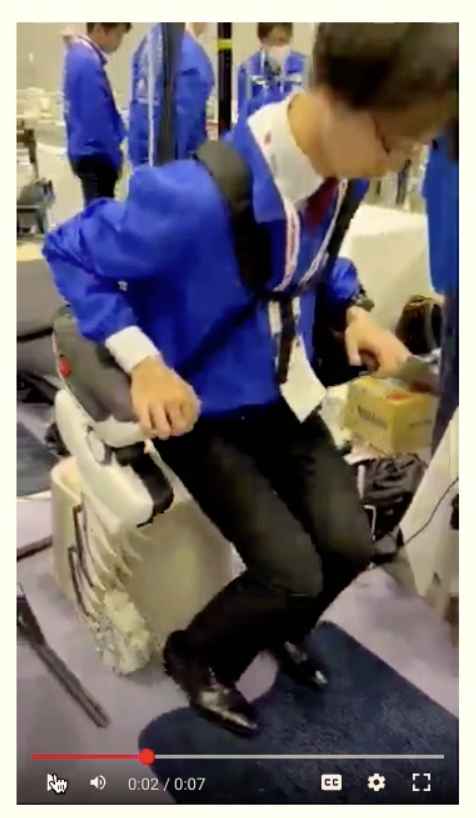
What is the Japan-moonshot project?
To overcome the challenges of a declining birthrate, aging population and associated labor shortage, the key is to realize a society free from the limitations of body, brain, space, and time and allow people with various backgrounds and values – such as the elderly and those with responsibilities for nursing and childcare – to actively participate in society.
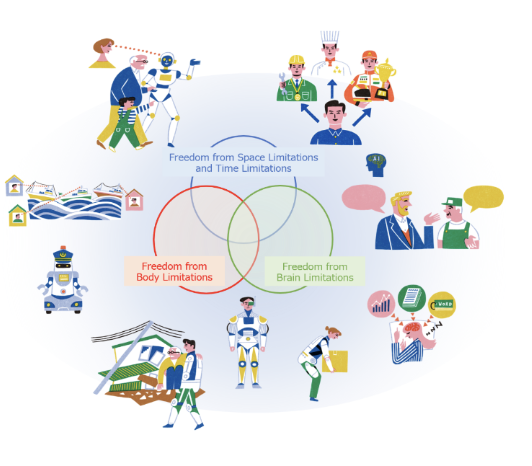
What is the internet of things? (IoT)
The Internet of things (IoT) describes physical objects (or groups of such objects) with sensors, processing ability, software, and other technologies that connect and exchange data with other devices and systems over the Internet or other communications networks. Internet of things has been considered a misnomer because devices do not need to be connected to the public internet, they only need to be connected to a network and be individually addressable. [Wikipedia]
![<p><span><span>The </span><strong><span>Internet of things</span></strong><span> (</span><strong><span>IoT</span></strong><span>) describes physical objects (or groups of such objects) with sensors, processing ability, software, and other technologies that connect and exchange data with other devices and systems over the Internet or other communications networks.</span><sup><span> </span></sup><strong><span>Internet of things has been considered a misnomer because devices do not need to be connected to the public internet, they only need to be connected to a network and be individually addressable. </span></strong><span>[Wikipedia]</span></span></p>](https://knowt-user-attachments.s3.amazonaws.com/ed2fd131-b9f0-4b6f-8774-f98262d870c3.png)

Service-oritented architecture for IoT
[wikipedia] In computer software, business logic or domain logic is the part of the program that encodes the real-world business rules that determine how data can be created, stored, and changed.
![<p><span style="font-family: "Helvetica Neue", sans-serif;"><span>[wikipedia] In computer software, </span><strong><span>business logic</span></strong><span> or </span><strong><span>domain logic</span></strong><span> is the part of the program that encodes the real-world business rules that determine how data can be created, stored, and changed.</span></span></p>](https://knowt-user-attachments.s3.amazonaws.com/3bf55ee9-059c-4a37-8865-5ab24a5550f2.png)
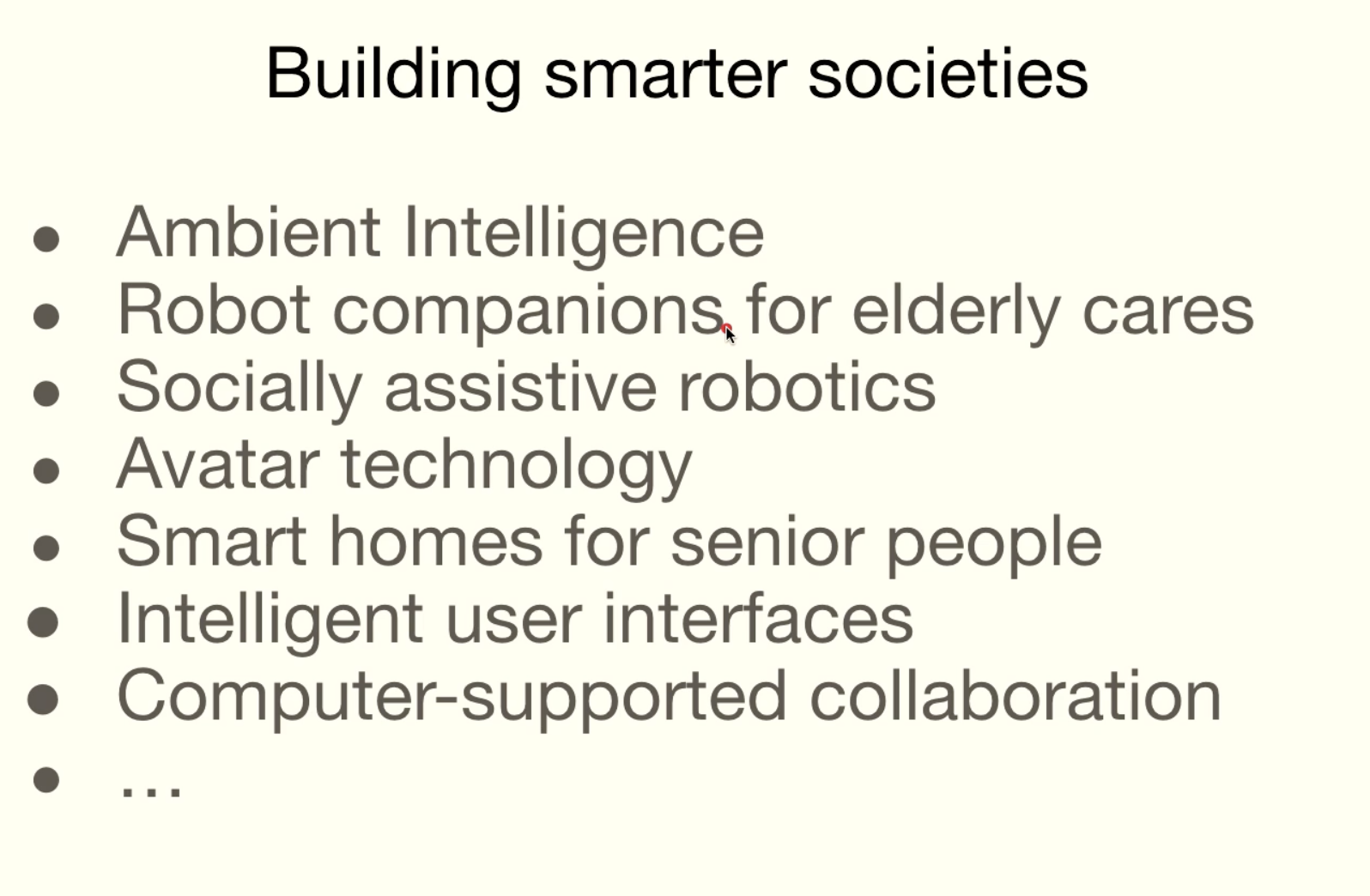
What are 4 IoT requirements and challenges?
Low-power embedded systems
“always on” (or asleep) but need high performance
Cloud computing
Data collected across the network can’t all be stored and processed on local devices
Management of big data
Interpreting and acting on massive influx of data
Network connection
Networked objects have an IP address
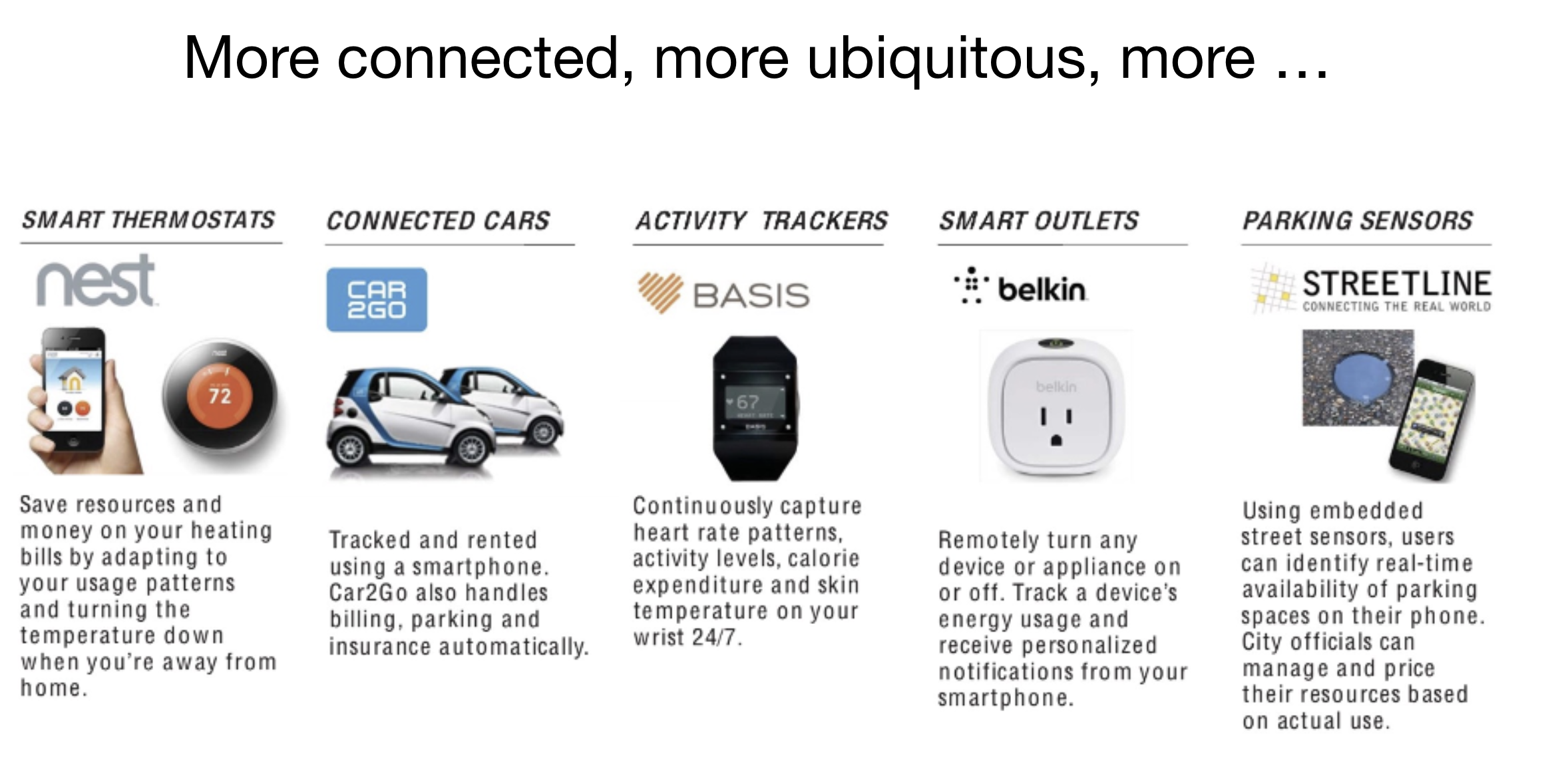
What is the ethical question?
To consent or not to consent
What are the 5 dark patterns?
A dark pattern (also known as a "deceptive design pattern") is "a user interface that has been carefully crafted to trick users into doing things, such as buying overpriced insurance with their purchase or signing up for recurring bills"
nagging
Redirection of expected functionality that persists beyond one or more interactions.
obstruction
Making a process more difficult than it needs to be, with the intent of dissuading certain action(s).
sneaking
Manipulation of the user interface that privileges certain actions over others.
interface interference
forced action
